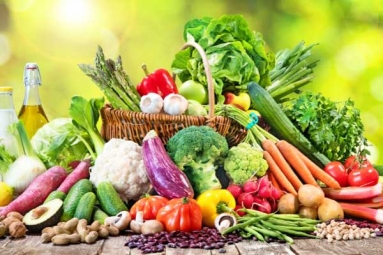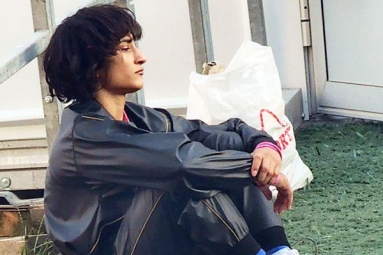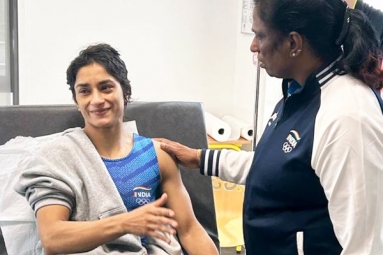
(Image source from: Canva.com)
Dal (lentils) is more than just a comfort food, it is a staple in every Indian household. A simple bowl of dal is often eaten with rice, chapati or roti and is an essential meal for many of us. Nutrient-rich lentils are considered a rich source of protein, especially in vegetarian diets. In fact, many of us may think that a hearty bowl or lentil salad is enough to meet our daily protein needs. But there's a catch. Dal alone is not a complete protein. It should be combined with other foods to create a balanced protein profile. Holistic health coach Luc Coutinho revealed this truth in an Instagram post where he shared the fact that while lentils, beans and legumes are rich in proteins, they are not “complete” proteins. What does that mean? To understand this, we need to take a closer look at amino acids, the building blocks of proteins. In total there are 20 types of amino acids, 9 of which are considered essential amino acids. This means that our body cannot produce amino acids itself and has to get them through food.
Although lentils and legumes are rich in the essential amino acid lysine, they lack sufficient amounts of another amino acid called methionine, which is abundant in grains such as rice and wheat. Rice and wheat, on the other hand, have little lysine but are rich in sulfur-containing amino acids, methionine and cysteine, which are not found in lentils and beans. When dal is combined with grains such as rice, wheat and even millet, it creates a complete protein that contains all nine essential amino acids required for optimal health. This is particularly important for vegetarians who rely on plant-based foods to meet their nutritional needs. In countries like India, where rice and wheat are staple foods, the traditional combination of dal and grains ensures a balanced and complete protein intake.
The traditional Indian thali, a careful combination of dal, grains and vegetables, demonstrates the wisdom of combining foods to create a balanced and nutritious meal. This centuries-old practice ensures you get the right mix of protein as well as vitamins, minerals and fiber.
Let's look at some classic examples of how different grains and legumes can be combined to create a complete protein:
Dal Chawal or Rajma Rice (India): This iconic Indian dish combines rice with lentils (dal) or cowpeas (rajma). Not only is this combination delicious, but it also offers a complete amino acid profile, making it a complete plant-based protein source.
Dal Roti (India): The combination of dal and roti (Indian flatbread) is another great example of this principle being put into practice. The combination of legumes and wheat ensures that the body receives all the essential amino acids it needs for protein synthesis.
Hummus Pita (Middle Eastern): This combination of hummus (made from chickpeas and legumes) and pita bread (a grain-based food) reflects the Indian approach to combining legumes and grains into a complete protein. Click here for the hummus recipe.
Poha (Indian) with peanuts or sprouts: Poha (flat rice) with peanuts or sprouts is a quick protein-rich meal. Peanuts or sprouts supplement the missing amino acids and balance the protein profile of poha.
Dal Dhokri (India): Dal Dhokri, a traditional Gujarati dish, is a combination of flour dumplings (dhokli) and dal. The combination of wheat and legumes makes for a filling and protein-rich meal. Click here for Dal Dahkali recipe.
Dal Khichdi (India): This easy-to-digest dish is a combination of rice and lentils seasoned with turmeric and cumin. Not only is it beneficial, but the combination of rice and lentils is also high in protein.
Corn and Lentil Tortillas (Latin America): The combination of corn (a grain) and lentils provides the complete protein commonly found in traditional Latin American dishes.
It is important for vegetarians to ensure a balanced protein intake. Unlike animal proteins, which typically contain all of the essential amino acids, plant proteins often lack one or more of these amino acids. Understanding the science of protein pairing allows vegetarians to ensure they are getting a complete set of amino acids by combining legumes with grains and cereals. This is especially important in a country like India, where vegetarianism is widespread and many meals are based on dal and rice.
Next time you enjoy dal, remember that while lentils are a great source of protein, combining dal with rice, wheat or other grains really creates a complete and balanced protein profile. This simple yet powerful nutritional wisdom has been part of traditional Indian cuisine for centuries and continues to provide practical solutions to meet your protein needs. Therefore, the art of combining grains and pulses, be it dal chawal, homospita or dal zakri, is a timeless recipe for health and nutrition.



















